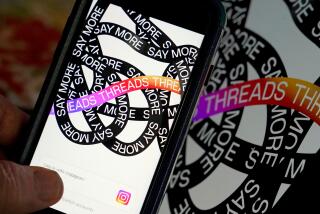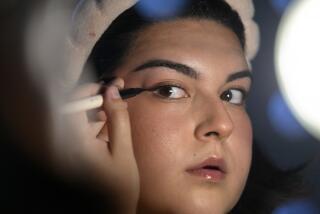Facebook pledges to help advertisers by making ads more prominent
Facebook Inc. has begun pitching itself to Madison Avenue with a splashy campaign worthy of fictional adman Don Draper.
At its first annual marketing conference in New York, Facebook executives pledged to raise the visibility of the world’s biggest brands on the social network with more prominent ads on desktops and — for the first time — on mobile devices that will be much tougher for users to tune out.
For Facebook users and their friends, it will mean seeing messages and offers from brands they have “liked” such as Ben & Jerry’s, Starbucks and Wal-Mart sprinkled into status updates from friends.
The rare East Coast appearance came as Facebook prepares an initial public offering that is expected to be the largest for a U.S. Internet company, sending an unmistakable signal that Facebook is ready to make serious money from online advertising.
“This is where Madison Avenue lives. It’s a stake in the ground,” Altimeter Group analyst Rebecca Lieb said.
The coming-out party at the American Museum of Natural History drew hundreds of big-name marketers from such companies as Proctor & Gamble and Nestle. They were served red velvet cupcakes and cocktails, watched singer Alicia Keys perform and heard Facebook’s chief operating officer, Sheryl Sandberg, say that they will be given a much greater presence on the site.
“If we’re going to make marketing truly social, it won’t be us,” Sandberg told the crowd. “It’s going to be you.”
Marketers said it was the message they wanted to hear. Facebook has tantalized Madison Avenue with its vast hoard of personal information on its users. Facebook doesn’t have to guess who its users are or what they like. Facebook knows because users share this information freely. But Facebook Chief Executive Mark Zuckerberg has said he views Facebook more as a way to connect people than as a business and has been reluctant to flood the site with ads.
“This event was targeted squarely at the big-brand advertisers, the kinds of companies that spend millions of dollars a year on online advertising, and Facebook wants to get more of that money,” EMarketer analyst Debra Aho Williamson said.
Facebook, which is in the federally mandated quiet period, sidestepped any mention of the IPO, which will probably take place this spring. But the IPO was the elephant in the room as Facebook comes under increasing pressure to show investors it can fire up its online advertising business to justify a valuation that some say could top $100 billion.
Facebook made 85% of its $3.71 billion in revenue last year from online ads. Ad sales rose 69% to $3.15 billion last year, according to the company’s IPO filing. Revenue grew as the number of ads Facebook showed users increased 42% and the average price per ad increased 18%.
Many brands already advertise on the site, but Facebook will have to turn more brands into paying customers before it can tout itself as a top destination for large advertisers.
Facebook rolled out new ways for advertisers to reach its 845 million users, showing off redesigned Timeline pages that marketers can use to promote their brands to fans and their friends and new ads that pop up on the home page, News Feed, the log-out screen, and on smartphones and tablets. More than 425 million users access Facebook through mobile devices. Some 37 million people log out of the social network every day.
Facebook executives said advertisers would have much the same ability to interact with users as users have to interact with one another, turning ads into “stories” that have the look and feel of the rest of Facebook.
Most of the new features will be available to marketers in March. For example, Paramount Pictures plans to promote the re-release of “Titanic” in 3-D with a video trailer that will jump from its Facebook page to the right-hand side of users’ pages to the News Feed and to the log-out screen, giving Paramount plenty of opportunity to engage with its 17 million “Titanic” fans and their 700 million friends.
Facebook plans to roll out the ads slowly and get feedback from users. At first, Facebook users may see just one message from a brand they are connected to each day in the News Feed.
Analysts expect brands that for years have set up shop on Facebook for free to experiment with buying the new ads.
“I still have questions whether advertisers are going to want to pay up for all of these features. I think they will experiment with them, but I think it’s going to come down to results,” Williamson said. “If they don’t see results, ultimately these new ads won’t improve Facebook’s bottom line.”
More to Read
Inside the business of entertainment
The Wide Shot brings you news, analysis and insights on everything from streaming wars to production — and what it all means for the future.
You may occasionally receive promotional content from the Los Angeles Times.










